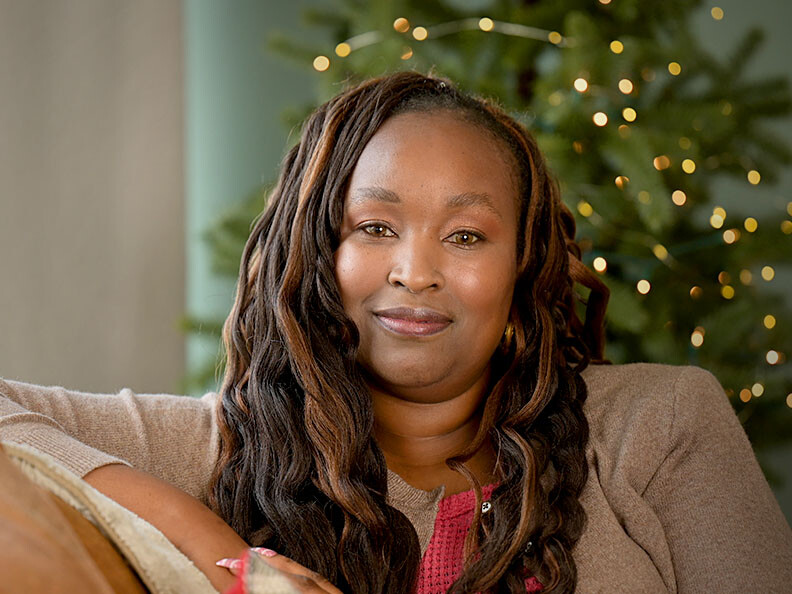Your gift is 100% tax deductible
Signs and Symptoms of Hodgkin Lymphoma
You or your child can have Hodgkin lymphoma and feel perfectly well. But this type of cancer often causes symptoms or changes that should be checked by a doctor. Learn what to watch for and when to contact your health care team.
Swollen lymph nodes: the most common symptom
The most common symptom of Hodgkin lymphoma is one or more enlarged or swollen lymph nodes. This might feel like a lump or bump under your skin. It is often located in the neck, underarm, or groin. (See more on swollen lymph nodes below.)
If a lymph node swells because of Hodgkin lymphoma
- It usually doesn’t hurt, but it may become painful after drinking alcohol.
- The lump might get bigger over time.
- New lumps might appear near it or even in other parts of your body.
Other possible causes of swollen lymph nodes
Most enlarged lymph nodes are caused by an infection, not lymphoma. This is especially true in children. Lymph nodes that swell because of infection are called reactive or hyperplastic nodes.
If a lymph node swells because of infection:
- It often hurts when touched.
- It returns to normal size after the infection goes away.
Other cancers can cause swollen lymph nodes, too. It’s best to contact your health care team if you have an enlarged lymph node, especially if you haven’t had a recent infection.
B symptoms: symptoms that affect staging
B symptoms can help doctors determine the stage of your lymphoma and your outlook. They include:
- Fever (which can come and go over several weeks) without an infection
- Drenching night sweats
- Weight loss without trying (at least 10% of your body weight over 6 months)
General symptoms
Hodgkin lymphoma can also cause other symptoms that may seem unrelated, such as:
- Itching skin
- Feeling tired (fatigue)
- Loss of appetite
Sometimes the only symptom might be feeling tired all the time.
Symptoms affecting the chest
If Hodgkin lymphoma affects lymph nodes inside your chest, they might press on your windpipe (trachea) and cause:
- Coughing
- Trouble breathing, especially when lying down
- Pain behind your breastbone
When to see a doctor
If you have one or more of these symptoms, it doesn’t mean you have Hodgkin lymphoma. Many of these symptoms are much more likely caused by other problems, like an infection.
Still, contact a doctor if you or your child has any of these symptoms. The doctor can find the cause and treat it, if needed.
- Written by
- References

Developed by the American Cancer Society medical and editorial content team with medical review and contribution by the American Society of Clinical Oncology (ASCO).
Bartlett NL, Foyil KV. Chapter 105: Hodgkin lymphoma. In: Niederhuber JE, Armitage JO, Dorshow JH, Kastan MB, Tepper JE, eds. Abeloff’s Clinical Oncology. 5th ed. Philadelphia, Pa. Elsevier: 2014.
National Cancer Institute. Adult Hodgkin Lymphoma Treatment (PDQ®)–Patient Version. Feb 27, 2025. Accessed at www.cancer.gov/types/lymphoma/patient/adult-hodgkin-treatment-pdq on July 10, 2025.
National Comprehensive Cancer Network, Clinical Practice Guidelines in Oncology (NCCN Guidelines®), Hodgkin Lymphoma, Version 2.2025 -- Jan 30, 2025. Accessed at www.nccn.org/professionals/physician_gls/pdf/hodgkins.pdf on July 10, 2025.
Younes A, Carbone A, Johnson P, Dabaja B, Ansell S, Kuruvilla J. Chapter 102: Hodgkin’s lymphoma. In: DeVita VT, Lawrence TS, Rosenberg SA, eds. DeVita, Hellman, and Rosenberg’s Cancer: Principles and Practice of Oncology. 10th ed. Philadelphia, Pa: Lippincott Williams & Wilkins; 2015.
Last Revised: October 6, 2025
American Cancer Society medical information is copyrighted material. For reprint requests, please see our Content Usage Policy.
American Cancer Society Emails
Sign up to stay up-to-date with news, valuable information, and ways to get involved with the American Cancer Society.



